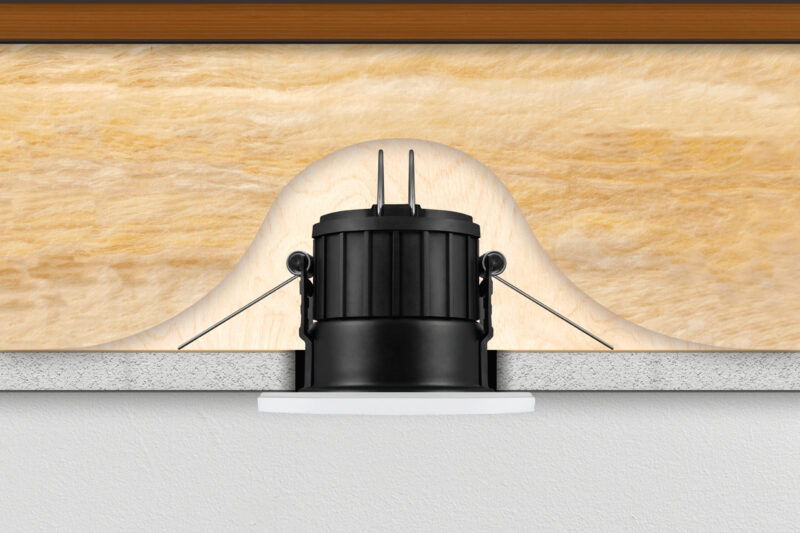When it comes to energy efficiency in homes and buildings, insulation is a key component. It helps to keep buildings warm in the winter and cool in the summer, reducing energy costs and carbon footprint. However, when installing insulation, it’s important to consider the safety of the building and its occupants, particularly in areas where there are electrical fittings such as fire rated downlights.
Fire rated downlights are designed to provide a level of protection in the event of a fire, but can they be safely covered with insulation? The short answer is yes, but there are some important regulations and safety precautions that need to be taken.
Fire Rating Regulations
In the UK, building regulations state that any electrical equipment installed in a dwelling must be installed in such a way as to prevent, as far as is reasonably practicable, harm to the occupants of the building and to any other person who may be affected by the equipment. This includes fire rated downlights.
The Building Regulations Approved Document B (Fire Safety) states that recessed lighting fixtures must have a fire resistance of at least 30 minutes. This means that they must be able to withstand fire for at least 30 minutes before the fire spreads to other parts of the building. Additionally, they must be installed in such a way that they do not create a breach in the fire-resistant barrier.
Safety Precautions when installing Fire Rated Downlights
When installing insulation around fire rated downlights, it’s important to follow some safety precautions to ensure that the fittings remain safe and effective.
Firstly, it’s important to use the right type of insulation. Mineral wool, glass wool, or cellulose fibre insulation are all suitable for use around fire rated downlights, as they are non-combustible and can withstand high temperatures. However, it’s important to avoid using foil-backed insulation as this can create a thermal barrier that could cause the downlight to overheat.
Secondly, it’s important to maintain a safe distance between the insulation and the downlight fitting. The Building Regulations Approved Document L (Conservation of Fuel and Power) states that there should be a minimum distance of 30mm between the insulation and the fitting. This is to prevent the downlight from overheating and to ensure that it remains fire resistant.
Finally, it’s important to ensure that the downlight fitting is properly ventilated. This is to prevent the build-up of heat and moisture, which could damage the fitting and reduce its effectiveness. To ensure proper ventilation, it’s important to use a fire hood or downlight cover that is specifically designed for use with insulation.
Recommended Fire Rated Downlight
Phoebe LED Downlight Fire Rated 8.5W (50W Eqv) Tri-Colour CCT White and Brushed Nickel IP65
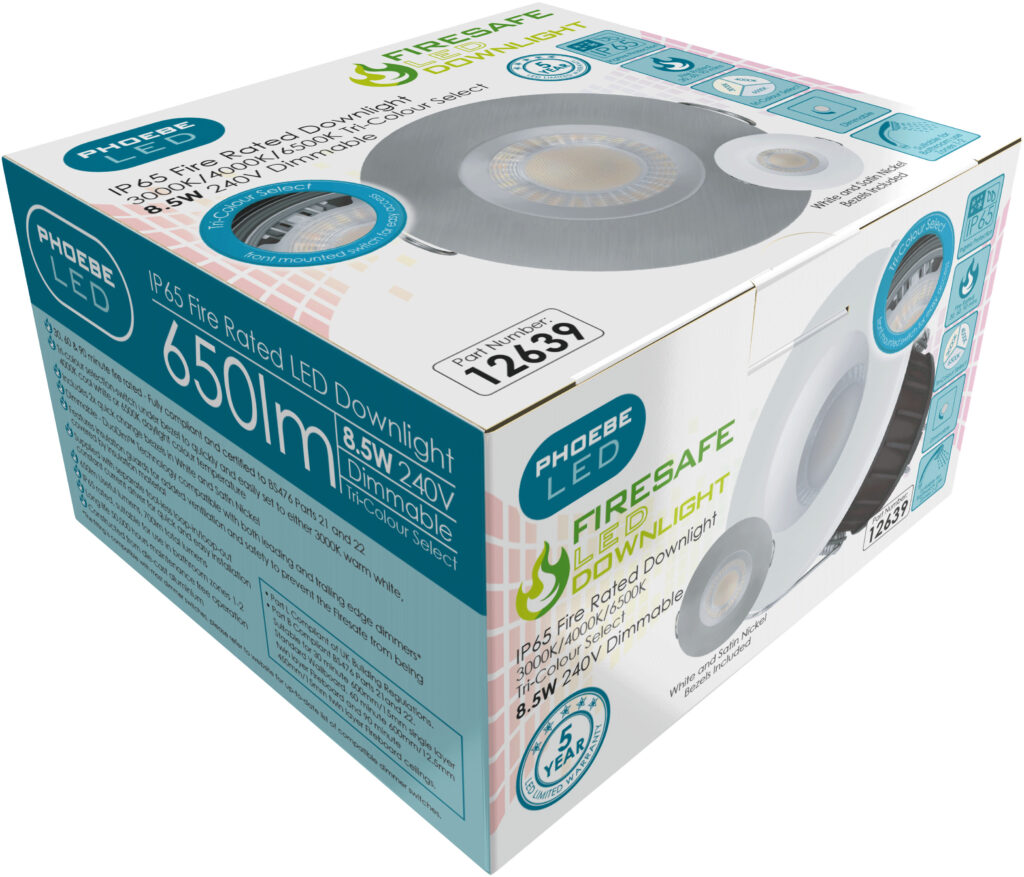
Our choice for the ultimate fire rated downlight is the ‘Fire Safe’ downlight from Phoebe LED.
Not only does it feature 30, 60 and 90-minuted fire protection to Part L compliant of the UK Building Regulations and Part B compliant BS476 Parts 21 and 22 – it also features two unique built-in insulation brackets to maintain a safe distance from your insulation and the downlight itself.
The fitting is IP65 rated, so can be safely installed in humid rooms such as bathrooms or kitchens.
It features Tri-Colour technology which allows you to effortlessly switch between warm white (3000K), Cool white (4000K) and Daylight (6500K) colour output at the flick of a switch (hidden behind the front bezel). Plus, due to it’s DuoDim™ Technology, it is compatible with a wide range of leading and trailing edge dimmer switches.
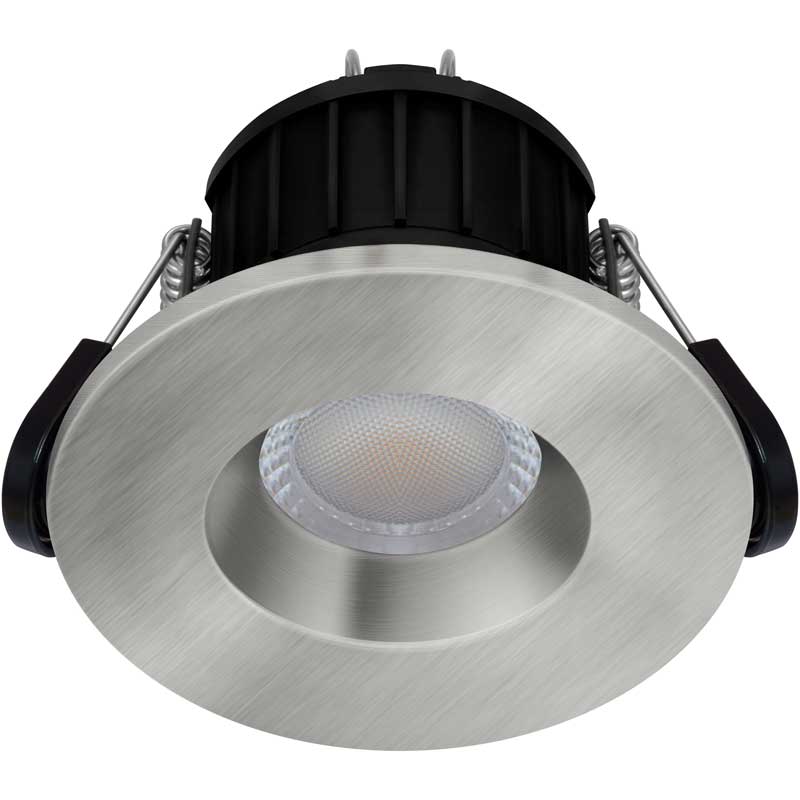
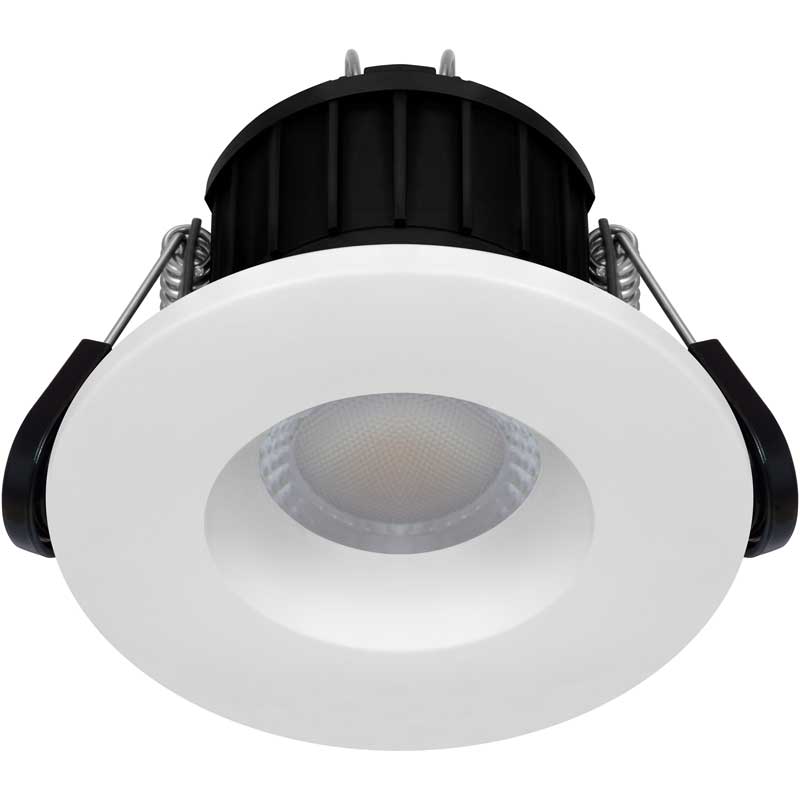
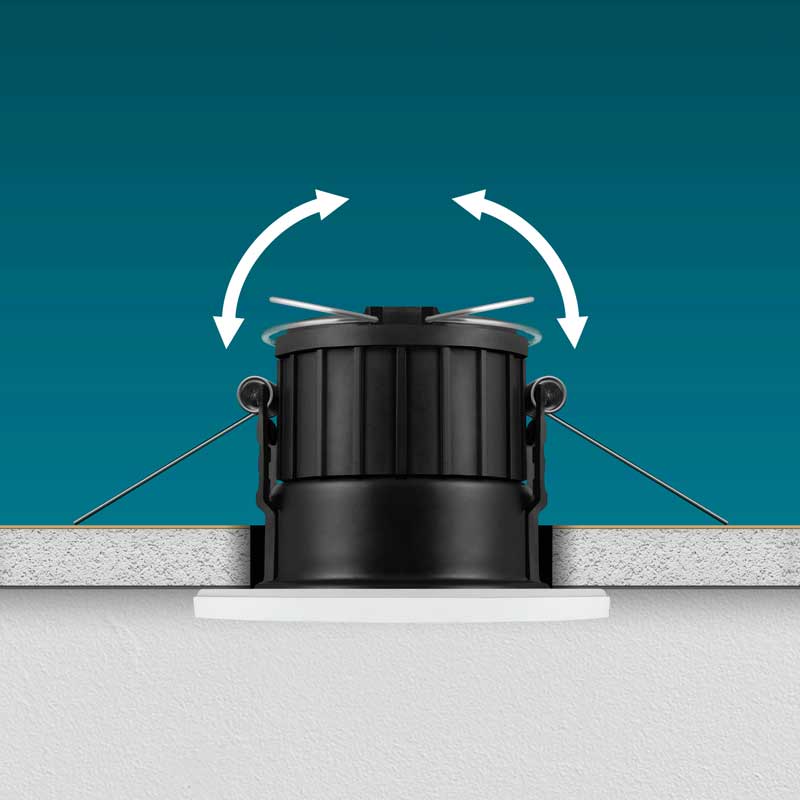
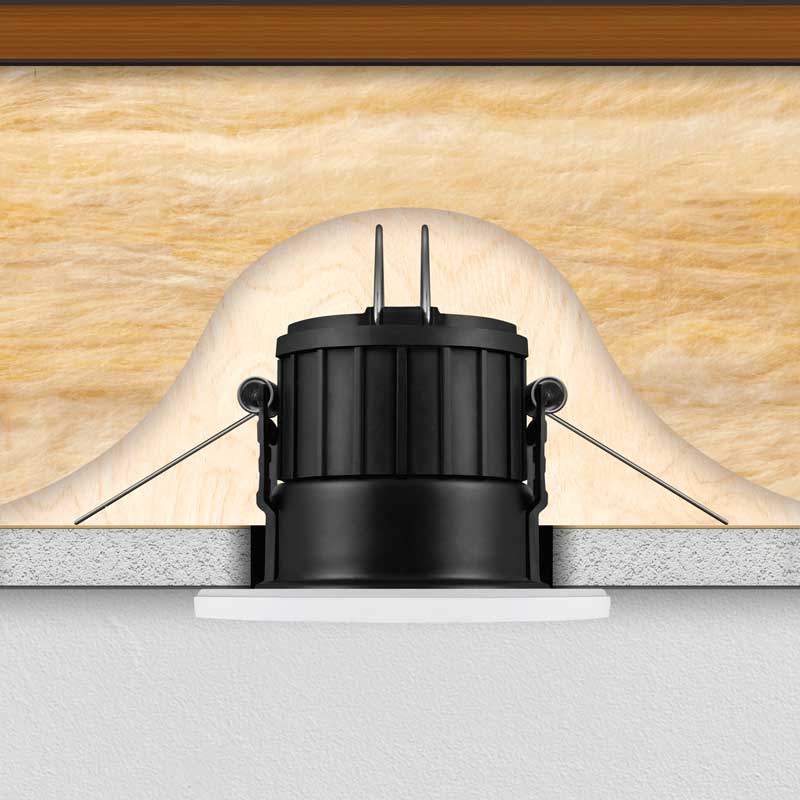
In conclusion, fire rated downlights can be safely covered with insulation, but it’s important to follow the regulations and safety precautions outlined above. By using the right type of insulation, maintaining a safe distance between the insulation and the fitting, and ensuring proper ventilation, you can help to reduce energy costs and carbon footprint, while keeping your building and its occupants safe.
